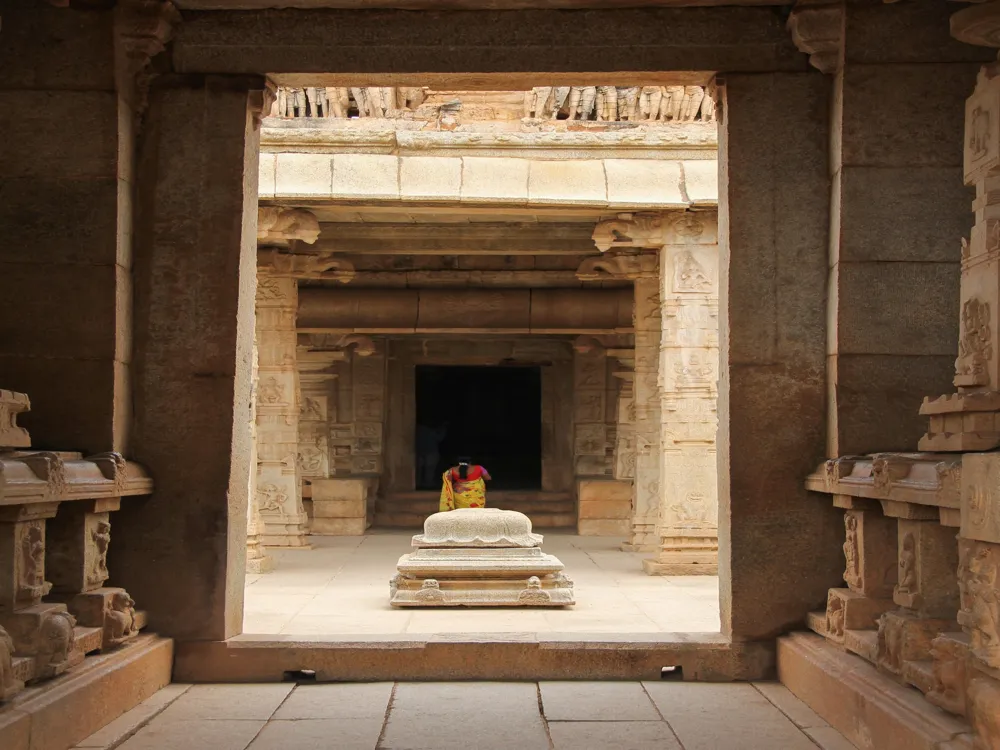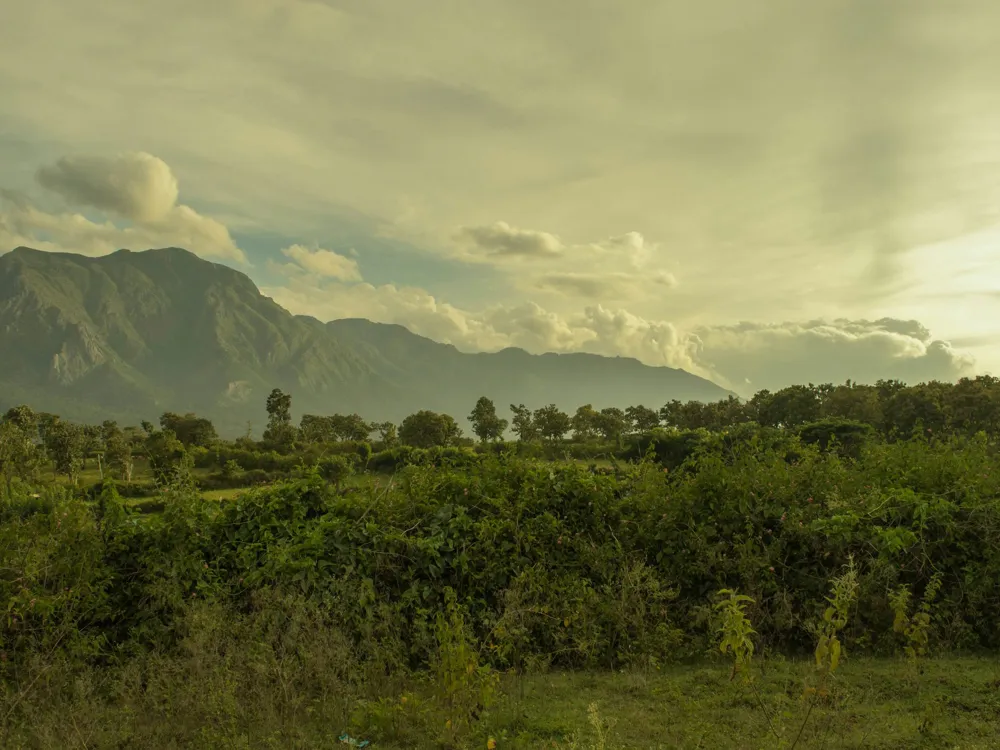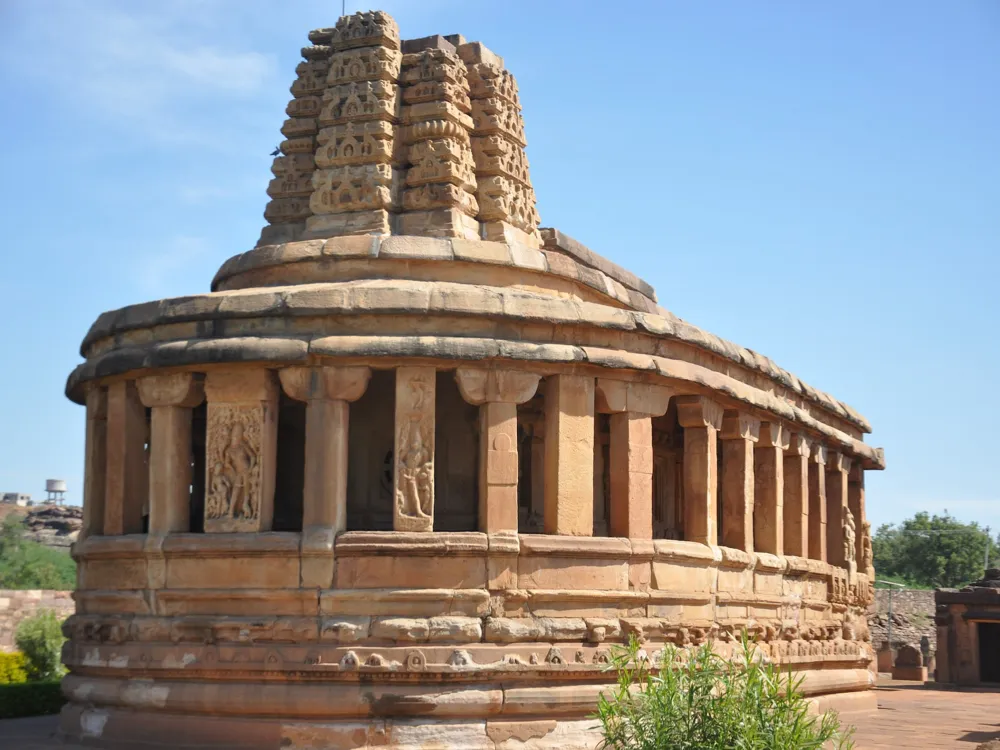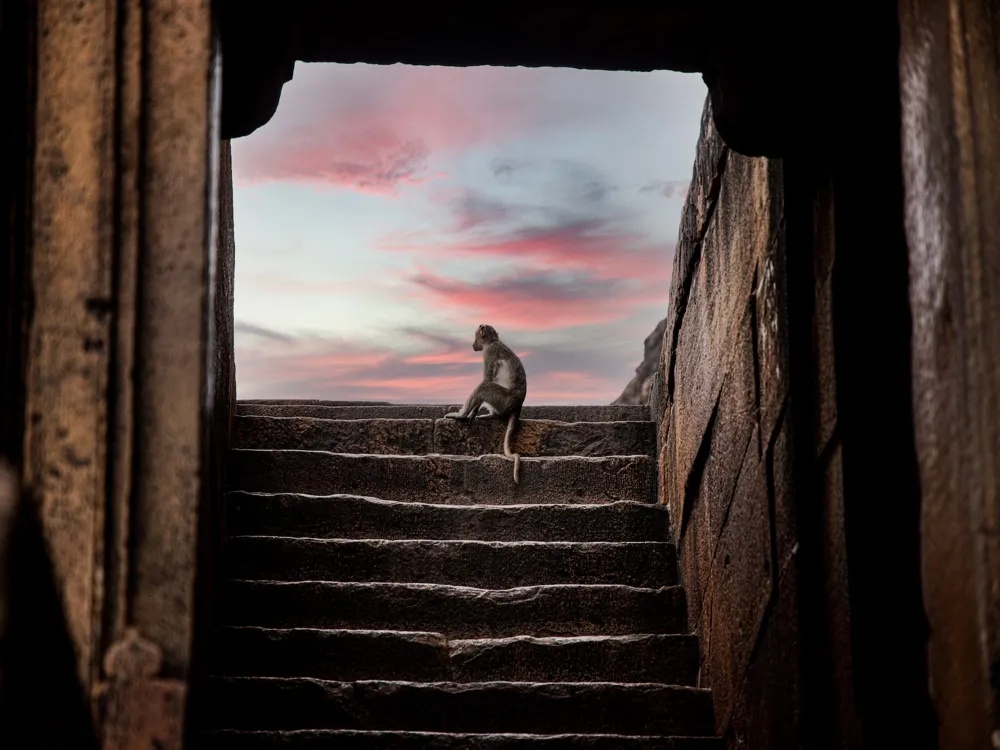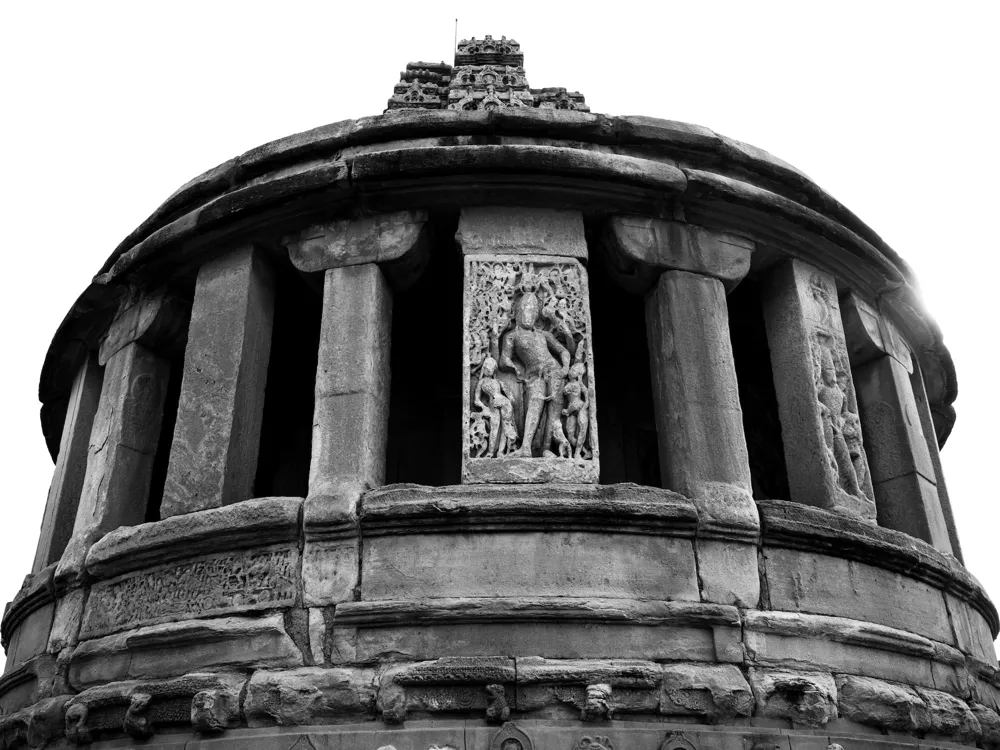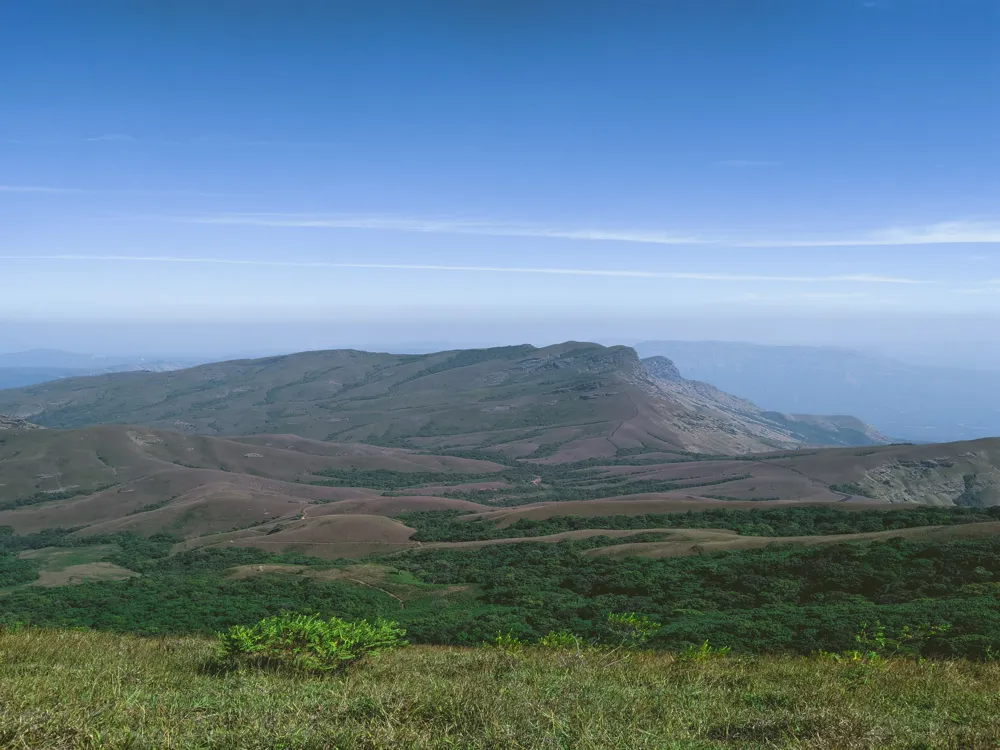Hampi, a UNESCO World Heritage Site located in Karnataka, India, is a historical spectacle of monumental ruins intermingled with large boulders and ancient landscapes. Once the epicenter of the Vijayanagara Empire, Hampi thrives not only on its historical significance but also through its captivating natural beauty. The region, renowned for its architectural grandeur and cultural heritage, spans over 26 square kilometers, offering a glimpse into the past with its richly carved temples, palaces, and market streets. The history of Hampi dates back to the 14th century, when it was established as the capital of the Vijayanagara Empire. Flourishing in trade and culture, the city was a melting pot of art, religion, and commerce, attracting travelers and traders from far and wide. The empire's wealth and power were reflected in its magnificent architecture and grand festivities. However, the city's glory was short-lived, as it fell to the Deccan Sultanate invasions in the 16th century, leaving it in ruins. Despite this, the site continues to attract historians, archaeologists, and travelers, mesmerized by the tales of its grandeur and tragedy. The landscape of Hampi is as captivating as its history. Nestled within the ruins are vast stretches of boulder-strewn hills, offering panoramic views of the Tungabhadra River and the surrounding plains. The natural setting complements the architectural wonders, creating a unique blend of nature and human endeavor. Hampi's significance extends beyond its historical and architectural marvels; it's a testament to the artistic and cultural achievements of the Vijayanagara Empire, making it a must-visit destination for history buffs and nature lovers alike. The architecture of Hampi is a testament to the ingenuity and craftsmanship of the Vijayanagara period. The city's ruins are a mix of religious, military, and civil structures, each with its unique style and design, showcasing the fusion of various architectural influences, including Hindu, Islamic, and even European elements. The use of local granite in construction gives the structures a distinct appearance, characterized by their sheer size and intricate carvings. The Virupaksha Temple stands as a magnificent example of the religious architecture in Hampi. Dedicated to Lord Shiva, the temple's towering gopuram (gateway tower) is adorned with intricate carvings and sculptures, exemplifying the Dravidian style. The temple's sanctum, pillared halls, and courtyards are a display of the architectural mastery of the era. Similarly, the Vittala Temple is another architectural marvel, famous for its stone chariot and musical pillars that produce musical notes when struck. The civil and royal structures of Hampi, like the Lotus Mahal and the Queen's Bath, illustrate the influence of Indo-Islamic architecture. The Lotus Mahal, with its symmetrical design and arched gateways, is an elegant blend of Hindu and Islamic styles. The Queen's Bath, on the other hand, showcases the luxury and sophistication of the royal lifestyle with its elaborate design and aquatic architecture. The military architecture is exemplified by the massive fortifications, watchtowers, and barracks, strategically designed for the defense of the empire. The urban planning of Hampi was ahead of its time, with well-laid streets, markets, and residential areas. The city was divided into sacred and secular sections, each with its distinct layout and purpose. The sacred center housed temples and religious structures, while the secular area included the royal enclosures, markets, and civilian dwellings. This division reflects the societal structure and priorities of the Vijayanagara Empire, with religion and trade being central to its existence. The ideal time to visit Hampi is from October to February, when the weather is pleasant and conducive for exploring the ruins. The monsoon season, from June to August, transforms the landscape into a lush green paradise, but heavy rains may hinder outdoor activities. Carry comfortable footwear for extensive walking, a hat, and sunscreen to protect against the sun. Also, ensure to carry enough water and light snacks, as exploring the vast ruins can be tiring. Auto-rickshaws and bicycles are the most convenient modes of transportation within Hampi. Hiring a guide or a tour vehicle can be beneficial for a comprehensive exploration of the site. Hampi offers a range of accommodation options, from budget guesthouses to luxury resorts. Staying in the nearby town of Hospet offers more variety in terms of hotels and amenities. As a historical and religious site, it's important to dress modestly and respect local customs. Photography might be restricted in certain areas, so it's advisable to check before clicking pictures. Hampi is accessible by various modes of transportation. The nearest airport is in Bellary, around 60 kilometers away, with regular flights from major cities. Hospet, 13 kilometers from Hampi, is the nearest railway station, well-connected to major Indian cities. By road, Hampi is connected to Bangalore (about 350 kilometers away) and other major cities in Karnataka and neighboring states. Regular bus services are available, and one can also opt for a taxi or self-drive to the destination.Overview of Hampi, Karnataka
Architecture of Hampi
Tips When Visiting Hampi
Best Time to Visit
Travel Essentials
Local Transportation
Accommodation Options
Respecting Local Culture
How To Reach Hampi
Hampi Utsav
Hampi
Karnataka
NaN onwards
View hampi Packages
Hampi Travel Packages
View All Packages For Hampi
Top Hotel Collections for Hampi

Private Pool

Luxury Hotels

5-Star Hotels

Pet Friendly
Top Hotels Near Hampi
Other Top Ranking Places In Hampi
View All Places To Visit In hampi
View hampi Packages
Hampi Travel Packages
View All Packages For Hampi
Top Hotel Collections for Hampi

Private Pool

Luxury Hotels

5-Star Hotels

Pet Friendly








